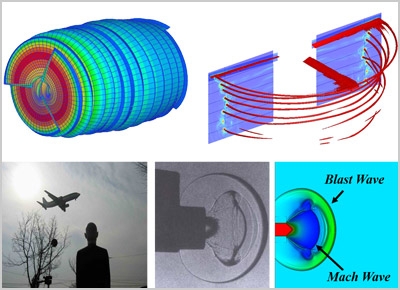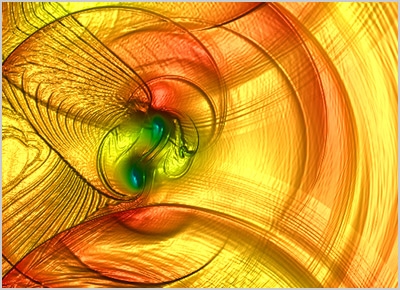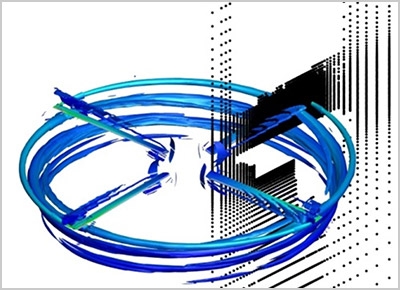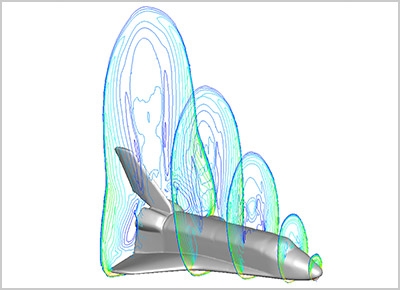Home
Research
Research Areas
Research Areas
Aeroacoustics and Noise Control Laboratory
Supervisor
Lee, Soo Gab
- 02-880-7384
- Bd.44 R.205, Bd.311 R.105
- http://aancl.snu.ac.kr
Research Area
AeroAcoustics & Noise Control Lab.(AANCL) was founded for the purpose of predicting and controlling noise from aircrafts in addition to calculating performance of aircrafts. According to worldwide environment conserving polices and climate change convention, It is being more important to develop eco-friendly technology.
Therefore, AANCL's main research topic are aeroacoustic analysis of various machineries and design to achieve low noise level. Furthermore, environment noise which has enormous influences on human life and renewable energies, especially wind power, are in our Lab.'s interests.
Therefore, AANCL's main research topic are aeroacoustic analysis of various machineries and design to achieve low noise level. Furthermore, environment noise which has enormous influences on human life and renewable energies, especially wind power, are in our Lab.'s interests.
Aerodynamic Simulation & Design Laboratory
Supervisor
Kim, Chong Am
- 02-880-1903, 7391
- Bd.301 R.1256 / Bd.40 R.110
- http://mana.snu.ac.kr
Research Area
Researches in professor Kim’s Lab. largely focuses on the development of advanced numerical methods for solving partial differential equation (PDE) and their applications to several aerodynamic engineering fields. Regarding advanced numerical methods for reliable numerical simulations, accurate, robust and efficient FVM-based flux schemes and limiting schemes (e.g. RoeM/RoeM_N, AUSMPW+/M-AUSMPW+/AUSMPW+_N fluxes, and MLP/MLP-u limiters) are developed. For higher-order methods such as DG, FR/CPR, higher-order shock-capturing method (hMLP, and hMLP_BD) are developed. Using these numerical methods, a number of applications are being conducted. First, we are conducting researches on all-speed multi-phase flows with phase change. This research area includes cavitation, multi-phase shock analysis and physics of cryogens inside liquid rocket. Fully integrated (fluid-structure-burning) computational simulations for multidisciplinary phenomena inside solid rocket motor are being conducted. Particular interests are focusing on nonlinear feedback interaction of fluid, solid, and burning module in order to examine highly coupled unsteady phenomena between hot gas flow, structure deformation and propellant burning. Fluid-Structure Interaction simulations of biomimetic flapping MAV’s are also being conducted. To achieve optimal performance of flapping MAV’s, analyses are focused on the unsteady aerodynamic force generation mechanism and the flexibility of the wing depending on insect’s flapping motion and structural materials. Aerodynamic shape design optimization is performed with high-fidelity computational analysis and optimization methodologies. Shape design optimization of airfoil, wing, wing-body configurations and intake is conducted. And, we are conducting researches on active flow control using synthetic jet to provide additional momentum to external flow for separation delay.
Aerospace Vehicle Design Laboratory
Supervisor
Yee, Kwan Jung
- 02-880-4152
- Bd.301 R.1213
- http://avdl.snu.ac.kr
Research Area
Aerospace Vehicle Design Lab in Seoul National University was established in 1983 to research various subjects occurred in air flow in regard to aircraft. Significant research topics of our laboratory are summarized into 4 categorizes; Helicopter aerodynamics, design optimization, aviation safety, and vehicle development.
Specifically, we develop efficient numerical method for analyzing helicopter performance and optimize various vehicles including aircraft, turbo-machinery. Aircraft icing and wake vortex predictions are major interests in aviation safety. In addition, we build development framework of scientific balloon.
Specifically, we develop efficient numerical method for analyzing helicopter performance and optimize various vehicles including aircraft, turbo-machinery. Aircraft icing and wake vortex predictions are major interests in aviation safety. In addition, we build development framework of scientific balloon.
Hypersonic & Rarefied flow Laboratory
Supervisor
Kim, Kyu Hong
- 02-880-8920
- Bd.40 R.112
- http://hypersonic.snu.ac.kr
Research Area
In this laboratory, we study high enthalpy flow and ground vehicle using computational fluid dynamics and wind tunnel test. In the field of high enthalpy flow, we study high temperature non-equilibrium flow in hypersonic flight environment, thermal protection system of hypersonic vehicle, plasma flow and flow control technique using it, and hot-gas behavior in high-voltage gas circuit breaker. In addition, various numerical methods are being developed to accurately and efficiently analyze complex flow fields. The field of ground vehicle is divided into the research on the aerodynamic shape design of high-speed trains and automobiles. In high-speed train, shape design and pantograph pan-head aerodynamic optimization are performed. In automobile, aerodynamic component design and shape optimization to enhance the aerodynamic performance are performed.




